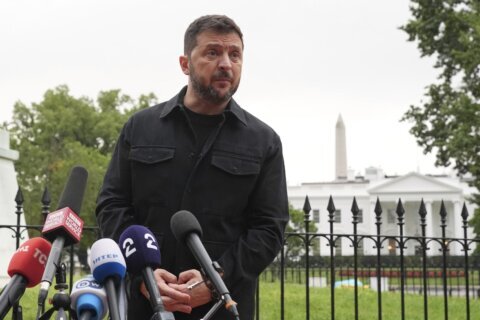WASHINGTON — The killings at the Paris-based Charlie Hebdo magazine in January 2015 signaled a new era of terrorism.
Loosely knit cells of extremists, who grew up in the areas targeted by terrorists, began deploying a style of attacks that has turned the usual counterterrorism methods upside down. They did it, counterterrorism experts say, by employing a simple approach derived from local criminal gangs.
Salah Abdelslam, one of the leaders of the Paris attacks in November 2015, escaped with relative ease. But his destination wasn’t a far-flung, remote hideout.
“He was the most wanted man in the E.U. for four months, but he didn’t run away; he ran home,” said Patrick Skinner, director of special projects at the Soufan Group.
Skinner, a former CIA case officer with extensive experience in counterterrorism, believes the Brussels cell of which Abdelslam was a part consisted of up to 35 to 40 local operatives when the Paris attacks took place.
Some of them were trained in firearms and explosives used abroad by the Islamic State of Iraq and the Levant (ISIL). And he believes they were also trained in a new form of terrorism.
“These people have basically merged terrorism with gang crime, which is virtually impossible to root out. Police everywhere from Liverpool to Molenbeek to Los Angeles have struggled with this. How can you root out this type of crime? You actually can’t,” Skinner said.
The rapid, deadly attacks in Paris, Los Angeles and Tunisia in 2015 and Brussels in March 2016 were the results of months of meticulous planning, surveillance and research, Skinner said, and were executed by internationally-connected but local terrorists, using the approach of a “carjacker.”
“It’s a local, crime-driven event that you just can’t possibly prevent. You can’t stop a carjacking attempt from happening. They’ve applied the carjacking model to terrorist attacks,” he said.
In his view, ISIL has radicalized members of communities many of whom are already part of the local criminal networks, plugging them into its global jihadist movement.
“They’re tied to the local economy, tied to history, and they are impossible to root out,” Skinner said.
The so-called Brussels “supercell” (a phrase coined by Skinner) consisted of the nine attackers killed in Paris, four killed in Brussels, eight arrested in Belgium and possibly five more picked up in London on April 15.
The cell, which included Mohamed Abrini, aka “the man in the hat,” who helped Abdelslam escape from Paris, may be much bigger.
“There were lots of people who were involved in the logistics,” Skinner said.
Abdelhamid Abaoud, the ringleader of the Paris attacks and a key leader of the Brussels cell, who was killed in the days after the Paris attacks, bragged that he returned from training in Syria with 90 others — presumably cell members. He said they were still in the Paris area after the November attacks.
Trapwire, a U.S.-based threat detection company with close ties to the U.S. intelligence community, also believes the cell is larger than what meets the eye.
An analysis posted on its website on April 9 read:
“The terror network involved in this operation was extensive. Law enforcement and intelligence agencies will work to collect details on other members from these new arrests. In particular, security officials will be interested in identifying surveillance and logistics team members as these individuals often have a great deal of intelligence on previous and future operations.”
These locally based terror cells are difficult to separate from professional terror groups.
“They’re following the practices of the professional organizations.,” Dan Botsch, president of Trapwire, told WTOP.
“What I mean is they are doing their homework. They don’t wake up one morning to decide ‘We’re gonna hit this facility.’ They study it online, in person; they run surveillance operations against it.”
Monthslong pre-operational surveillance was a hallmark of the Al Qaida organization in the 1990s and 2000s attacks against the U.S., Madrid, London and other Western targets. Botsch said ISIL’s locally based terror cells follow the same process.
“They will learn everything they need to know about that target, so that on the day of the attack they hit their target and do it in a way that’s going to create the maximum amount of damage,” he said.
The new tactics, Skinner says, have presented a stiff challenge for security organizations around the globe.
“What they’ve done is turn local thugs into international jihadists and we haven’t figured out how to deal with that. They’ve completely upended our usual counterterrorism apparatus,” he said.








